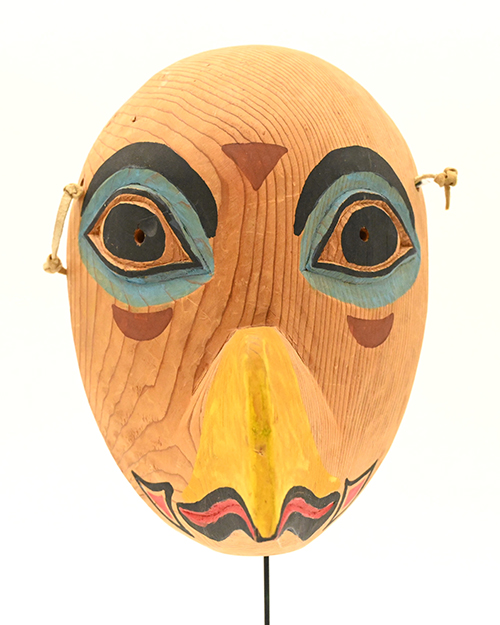Tlingit Eagle Mask

Though unsigned, this eagle mask is attributed to carver Willie Marks (1901-1981), a member of the Tlingit tribe, a Northwest Coast indigenous group who live primarily in southeast Alaska. The Eagle is one of two descent groups, or moieties, that the Tlingit people divide into. The other is the Raven. The Tlingit are a matrilineal society, meaning that a person’s belonging to either the Eagle or Raven moiety is determined by the affiliation of their mother. Moieties are then further divided into clans. To the Tlingit, the eagle is a symbol of leadership, strength, knowledge, friendship, and peace.
Willie Marks’ Tlingit name was Keet Yaanaayí. He was part of the Eagle (Ch’áak’) moiety and the Chookaneidí (Hoonah) clan. Marks is recognized as one of the finest Tlingit carvers of his generation. In addition to making masks, he was also well known for his model totem poles, which helped maintain that art form during a time when full-sized totem poles were not being made. His work is known for strong sculptural planes and raised almond-shaped eyes. Marks influenced many carvers who are still working today.
This Tlingit eagle mask is on display in Museum of World Cultures: Highlights from the UNC-Wilmington Collection through February 14, 2026.

